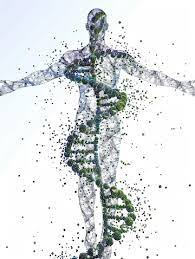The Vibrational Symphony of the Human Body: Tuning into Positive Frequencies
In a world increasingly dominated by the quantifiable and the scientifically measurable, the notion that human beings emit and are influenced by vibrations can seem archaic or mystical. Yet, this controversial idea is gaining traction, with more people exploring the profound impact of vibrational frequencies on our physical, emotional, and spiritual well-being. Proponents argue that understanding and harnessing these vibrations can unlock a new dimension of health and personal growth.
The Human Body as a Vibrational Entity
Every atom, molecule, cell, and organ in the human body operates at specific frequencies. This concept isn't just New Age philosophy but is rooted in fundamental physics. Quantum mechanics reveals that everything in the universe, including our bodies, is composed of energy that vibrates at various frequencies. When these frequencies are in harmony, the body experiences optimal health. Conversely, disharmony or lower vibrational states are believed to contribute to illness and emotional distress.
The Science of Vibrations
Nobel Prize-winning physicist Max Planck, one of the founding figures of quantum theory, stated, "All matter originates and exists only by virtue of a force." This force, many suggest, is vibrational energy. Dr. Bruce Tainio, a researcher in bioelectric medicine, developed a device to measure the frequency of the human body. According to his findings, a healthy human body typically vibrates at a frequency of 62-72 MHz. Disease begins when the body drops below this frequency, with conditions like cancer starting at around 42 MHz and the death process at 25 MHz.
Positive Vibrations and Their Benefits
Proponents argue that maintaining high vibrational frequencies is crucial for health and well-being. Positive vibrations are said to be associated with feelings of love, joy, gratitude, and compassion. These emotional states are not merely psychological but have physiological effects, influencing everything from cellular regeneration to immune function.
1. Emotional Resilience: High vibrational frequencies are linked to improved emotional health. People who practice gratitude, mindfulness, and other positive thinking techniques often report reduced stress and anxiety. The HeartMath Institute's research shows that positive emotions can create coherence in our heart rhythms, enhancing emotional stability and resilience.
2. Physical Health: There's growing evidence that vibrations can directly affect our physical health. Practices like sound therapy, which uses vibrational frequencies to heal, have shown promise in treating conditions ranging from PTSD to chronic pain. The use of tuning forks, gongs, and singing bowls in therapy sessions is based on the premise that these tools can retune the body's energy fields to promote healing.
3. Spiritual Growth: Many spiritual traditions, from ancient Eastern philosophies to modern New Age beliefs, assert that maintaining high vibrational states is essential for spiritual growth. Practices such as meditation, yoga, and energy healing aim to elevate the body's vibrational frequency, facilitating a deeper connection to one's higher self and the universe.
Controversies and Skepticism
Despite the growing popularity of vibrational healing, the concept remains highly controversial. Critics argue that the science behind vibrations and their impact on health is tenuous at best. Skeptics often point to the placebo effect, suggesting that any benefits from vibrational therapies are due to the individual's belief in the treatment rather than the treatment itself.
Mainstream medicine typically views vibrational healing with skepticism, demanding more rigorous scientific evidence before accepting it as a valid therapeutic modality. The lack of standardized measurements and the difficulty in quantifying vibrational states contribute to this skepticism.
Bridging the Gap: Science and Spirituality
The challenge lies in bridging the gap between the measurable and the experiential. While the scientific community demands empirical evidence, many advocates of vibrational healing argue that the subtleties of human energy fields are beyond current scientific methodologies. They call for an open-minded approach, blending empirical research with experiential insights.
Conclusion: Embracing the Controversy
The idea that human beings are vibrational entities influenced by frequencies is a fascinating and polarizing topic. Whether one views it as pseudoscience or a frontier of medical and spiritual discovery, the discussion invites us to reconsider our understanding of health and wellness. By exploring the intersection of science and spirituality, we may uncover new pathways to enhance our physical, emotional, and spiritual lives. The vibrational symphony of the human body, when tuned to its highest frequencies, holds the potential for profound transformation, inviting us to live in harmony with ourselves and the universe.
As this field continues to evolve, it challenges us to remain curious, open-minded, and willing to explore the vibrational mysteries that lie within and around us.




Comments
Post a Comment